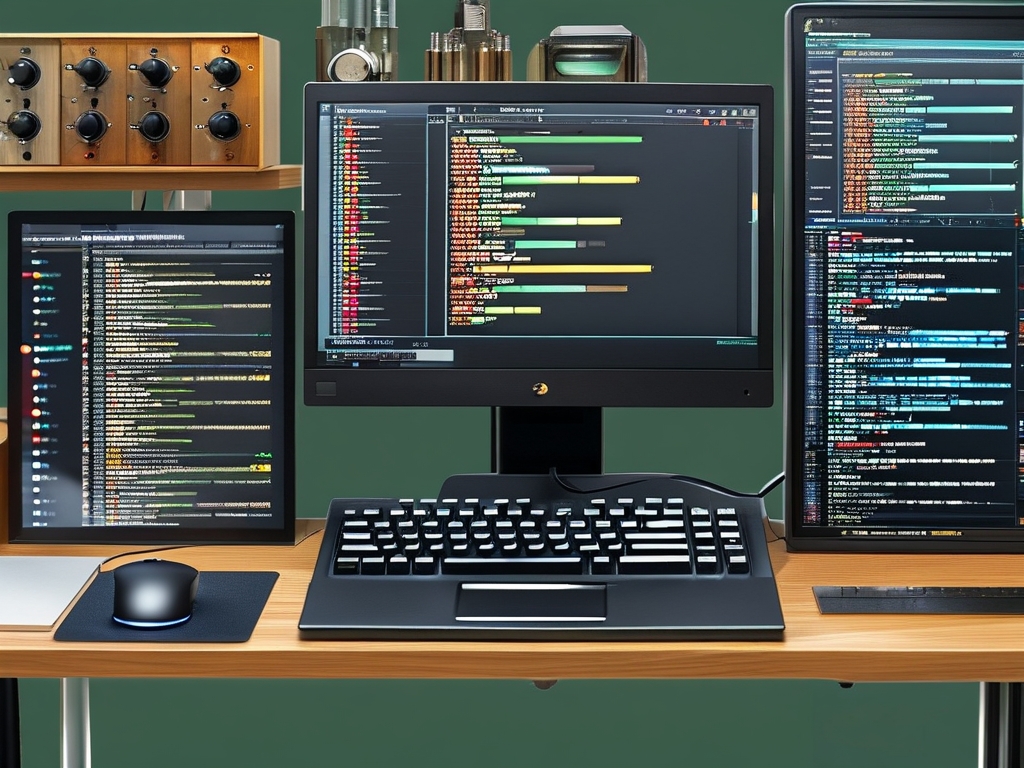Anhui Province, a rising hub for technology and innovation in eastern China, has witnessed significant growth in embedded software development over the past decade. With its strategic location in the Yangtze River Delta and a robust ecosystem of universities, research institutes, and tech enterprises, Anhui is positioning itself as a critical player in China’s embedded systems industry. This article explores the unique challenges and opportunities in embedded software development and debugging within Anhui, highlighting its evolving tech landscape, key industries, and the skills required to thrive in this field.
The Rise of Embedded Systems in Anhui
Embedded software development involves creating specialized programs for hardware devices, ranging from consumer electronics to industrial machinery. In Anhui, this sector has gained momentum due to several factors:

- Industrial Transformation: Anhui’s shift from traditional manufacturing to high-tech industries like automotive electronics, IoT (Internet of Things), and smart appliances has fueled demand for embedded systems.
- Government Support: Provincial initiatives, such as the Hefei Comprehensive National Science Center, provide funding and infrastructure for R&D in cutting-edge technologies.
- Academic Collaboration: Universities like the University of Science and Technology of China (USTC) and Hefei University of Technology offer specialized programs in embedded systems, fostering a talent pipeline.
Key Industries Driving Demand
Anhui’s embedded software development is closely tied to its core industries:
- Automotive Electronics: As home to major automakers like JAC Motors and Chery, Anhui requires embedded systems for electric vehicles (EVs), autonomous driving, and in-car infotainment.
- Smart Home Appliances: Companies like Midea and Gree leverage embedded software to develop energy-efficient and AI-driven home devices.
- Industrial Automation: Factories in Anhui’s manufacturing zones rely on embedded systems for robotics, sensors, and process control.
Challenges in Embedded Software Debugging
Debugging embedded software presents unique hurdles compared to traditional software development:
- Hardware-Software Integration: Developers must account for hardware limitations, such as memory constraints or real-time processing requirements. For example, debugging a microcontroller in an EV battery management system requires simulating real-world voltage fluctuations.
- Cross-Platform Compatibility: Anhui’s tech ecosystem uses diverse hardware architectures (ARM, RISC-V, etc.), necessitating adaptable debugging tools.
- Real-Time System Complexity: Industrial automation systems demand millisecond-level precision, making timing errors difficult to replicate and resolve.
Tools and Techniques for Effective Debugging
To address these challenges, developers in Anhui employ advanced tools and methodologies:
- JTAG Debuggers: Widely used for low-level hardware debugging, these tools enable direct interaction with microprocessors.
- Simulation Environments: Platforms like QEMU or MATLAB/Simulink allow engineers to test code without physical hardware, reducing development cycles.
- Automated Testing Frameworks: Companies like iFlytek (a Hefei-based AI firm) integrate CI/CD pipelines to automate regression testing for embedded systems.
Case Study: Debugging a Smart Agriculture IoT Device
A Hefei startup developing soil moisture sensors faced intermittent data corruption issues. The team used a combination of logic analyzers and Wireshark to trace the problem to a race condition in the sensor’s firmware. By implementing mutex locks and optimizing interrupt service routines (ISRs), they reduced error rates by 98%. This case underscores the importance of hybrid debugging approaches in resource-constrained environments.
Talent Development and Training
Anhui’s universities and vocational schools are addressing the skills gap through:
- Hands-On Labs: USTC’s embedded systems course includes projects using STM32 and Raspberry Pi kits.
- Industry Partnerships: Companies like Huawei’s Hefei R&D center offer internships focused on real-time operating systems (RTOS) and FPGA programming.
- Certification Programs: The Anhui Software Industry Association provides certifications in embedded Linux and AUTOSAR standards.
Future Trends and Opportunities
The future of embedded software in Anhui is shaped by emerging technologies:

- RISC-V Adoption: Local chip designers are embracing open-source RISC-V architectures to reduce dependency on foreign IP.
- AI at the Edge: Integrating machine learning models into embedded devices (e.g., smart cameras for traffic management) will require new debugging paradigms.
- 5G Integration: Anhui’s telecom infrastructure upgrades will drive demand for embedded systems in 5G base stations and IoT gateways.
Anhui’s embedded software development and debugging landscape is a microcosm of China’s broader tech ambitions. By leveraging its academic resources, industrial diversity, and government support, the province is overcoming technical challenges while fostering innovation. For developers, this environment offers unparalleled opportunities to work on cutting-edge projects—from autonomous vehicles to smart cities—that define the future of embedded systems. As Anhui continues to grow, its role in shaping global embedded technology standards will only expand.









